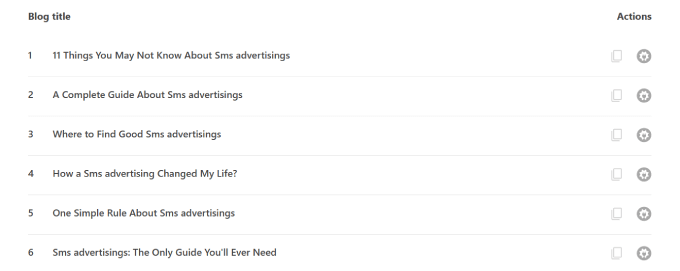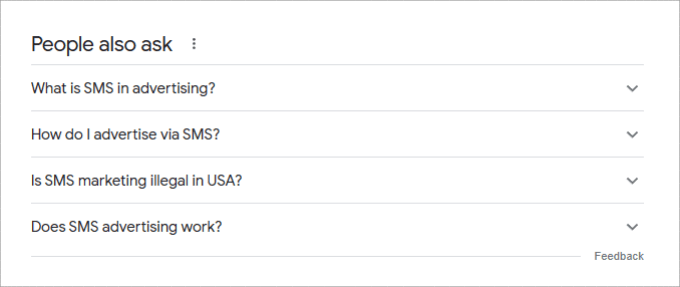
Content gap analysis is a crucial aspect of SEO (search engine optimization) that helps you identify opportunities to create new content or improve existing content to rank higher in search engine results.
Content gap analysis is a foolproof technique to steal traffic from competitors if you’re having trouble developing ideas for your blog or want to push your current pieces to the top. This will enable you to write more relevant blog posts since you’ll discuss subjects that interest your target audience.
What is content gap analysis?
Content gap analysis is a method that reviews an existing content topic to see if there are any gaps or missed possibilities that could be addressed.
You can assess whether a piece of content has to be brief and easy, long-form, as pillar content, and so on by looking at the search intent of each piece of information. Quantifying the content type makes it simple to identify the gaps that need to be filled.
A content gap analysis can be an excellent keyword research approach for uncovering content ideas that you might not have considered otherwise.
Consider that you want to provide your website’s users with the most assistance possible when it comes to cooking. Analyzing content gaps would entail determining whether your website addresses the cooking-related searches individuals make online.
If you discover that your website lacks content on well-liked subjects like “vegetarian cooking,” “quick dinner ideas,” or “healthy recipes,” then you might want to write articles about such subjects to cover those content gaps.
Why is content gap analysis important?
This analysis guarantees that your website remains relevant and beneficial to your target audience.
However, the content gap analysis also improves the performance of your current content.
However, as time passes and the information gets less relevant and old, you can encounter content decay. It will be necessary for you to update the information and refresh your content. Otherwise, your rivals might advance.
Conducting a content gap analysis is a straightforward procedure. Let’s examine a few basic steps you can take to do a content gap analysis.
1. Analyze the Content of Your Competitors
The first step in performing a content gap analysis is determining which keywords your rivals rank for but you do not.
The data will provide you with good instances of prospective keywords that could be useful to your business, as well as the content formats that your competitors are utilizing to rank for those keywords.
For each competitor, analyze their content, specifically the pages that rank well for your target keywords. Look for the following:
- Headings and subheadings
- Content format (e.g., articles, videos, infographics)
- Word count
- Keyword usage
- Quality and depth of information
- User engagement elements (comments, social shares)
- Multimedia (images, videos)
- Internal and external links
You may use SEMrush to find out who your top competitors are and how many keywords you have in common with them.
2. Conduct Market Research
By conducting a market research survey, you can find out what the most pressing needs, goals, pain points, and questions are from your audience.
This feedback will then be used to inform your website content strategy.
Create a quick, anonymous survey with Google Forms and distribute it to your intended audience.
The following questions should be included in your survey:
- What inquiries do you have concerning [topic]?
- Which remedies have you previously attempted?
- Why didn’t you find success with these solutions?
- Where do you look for/find solutions similar to [product/service]?
And many more.
3. Develop New Content ideas
Make a list of the keywords that you think are “missing” and use that list to generate ideas for blog posts. You can also use one of the available blog post idea generators.
Examine the list of potential blog titles to determine which ones best suit your target audience.
To assign these to a writing team, it would be wise to include them in a spreadsheet or project management system.

To start ranking for keywords your competitors are ranking for, save these ideas for blog posts and add them to your content calendar.
4. Monitor Underperforming Keywords for Websites
Next, take a look at the content that isn’t performing well on your website by looking through the list of your “Weak” keywords.
Without the need for a specialized tool, a quick Google search for your blog post will give you a decent idea of where it stands in the search results.
But conducting these searches by hand takes a lot of time. Use the Google Search Console as an alternative.
You can see a list of keywords along with their position in the search results, click-through rate, and impression count under the queries tab.

You can locate particular blog posts or pages along with their position by selecting the “Pages” tab.
Given that your primary competitors are ranking higher for those particular weak keywords, you should pay close attention to the keywords that match your SEMrush-derived “Weak” keyword list.
You can practically take their traffic if you can rank higher than them.
Alternatively, you can use the All in One SEO (AIOSEO) plugin to identify underperforming keywords for your website. With over 3 million users, it’s one of the greatest WordPress SEO plugins available.
Installing and activating the plugin is the first step.
You can check your keyword rankings directly within WordPress by using this plugin. Thus, by eliminating the need to manually check Google Search Console, you will save time.
5. Maximise Your Current Blog Posts to Fill Any Gaps
In order to raise each blog post’s ranking, we will now be going through it and filling in the blanks.
Begin by going over each blog post individually and determining how your page can be made better.
Look up each of those key terms on Google’s first page.
Occasionally, a first page with incredibly reliable results will appear. There aren’t many gaps and the content is authentic. In this instance, you want to make sure that the content you have matches the search intent of users and has headings that are similar to each other.
You can then create or update your content to be much better if you see that the first page’s content is lacking in quality.
It is not possible to ensure a higher ranking every time you update a blog post with a formula. Having said that, we’ll go over the various approaches to enhancing your content and advise you on what to consider when examining the articles of your rivals.
Make changes to your meta description and title tag
A well-written meta description and title tag should grab searchers’ attention and offer an answer to their question. This can raise the click-through rates on your blog, which will raise your search engine rankings.
With AIOSEO’s TruSEO On-Page Analysis, you can quickly add title tags, meta descriptions, and keywords for appropriate on-page SEO optimization by utilising the AISEO plugin.
Boost Your Readers’ Value
Seek out areas for improvement that will benefit your readers as you fill in the gaps in your content.
Adding pertinent keywords is one way to make your content more discoverable to readers and to help you find related subjects for your blog.
Create a FAQ Schema.
A great strategy to get on Google’s first page is to rank well in the People Also Ask section.
A high ranking in this area will increase website traffic and give your blog the appearance of being an authority on the subject.

Additionally, the FAQ schema helps users who prefer a question-and-answer format find more value in your content. It can make your content stand out if your rivals aren’t responding to the most crucial queries from searchers.
Bottom Lines
Finding gaps in your current content strategy is essential if you want to make sure that the new content you produce drives traffic and guides users toward the point of purchase. To do this, conduct a content gap analysis.
After completing a content gap analysis successfully, it’s crucial that you understand how to write blogs that are relevant to the keywords you have chosen.
In addition to saving you time, writing a solid blog outline line guarantees that the content you produce is of the highest caliber.
It helps ensure that you cover the most frequent queries and include the crucial details, like the appropriate keywords. It also makes the post easier to read by ensuring that all the ideas are well-organized and flow.
Additionally, it provides you with an opportunity to find new keyword opportunities based on what your rivals are targeting—or are not targeting.
The secret is to identify the topics and headings to cover by examining the Google content that ranks highest.
